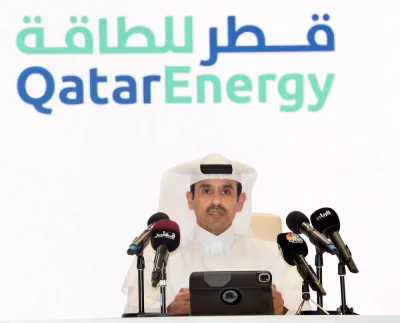Liquefied natural gas production is steadily increasing globally; but greater demand for LNG is seen in many parts of the world because of rapidly developing economies.
Globally, LNG production has now increased to more than 230mn tonnes a year and is expected to further increase to 370mn a year by 2020.
At the same time the number of LNG importing countries has almost doubled to 30 in the last 10 years.
According to HE Abdullah bin Hamad al-Attiyah, the former deputy premier and minister of energy and industry, clearly there is strong demand for liquefied natural gas in Africa, Asia and even in the Middle East.
In the 1980s and 1990s, the “demand for gas was pretty low” around the world, the energy industry veteran said at a panel session on “The Role of LNG in a Changing Energy World” hosted by Brookings Doha Center at the weekend.
“That situation has clearly changed,” al-Attiyah said and noted now there is demand for gas in Africa, Asia and even in the Middle East, where there are many oil-based economies.
“Many oil-based countries in the region require more LNG as their domestic consumption has gone up phenomenally”.
Despite a potential near-term oversupply of liquefied natural gas, investment in new liquefaction projects will be crucial in avoiding a possible under-supply situation in the early 2020s.
Given this significant increase in global demand, experts say under-supply could be the market reality in the early 2020s “if no new projects are sanctioned”.
As the global market for LNG continues to evolve, it is still a business that clearly requires significant capital investment in both the upstream and downstream sectors. In order for companies to succeed in the new global market, they will require a long-term vision and the resilience to overcome short-term uncertainty, experts say.
Concern is brewing in the global liquefied natural gas industry that low gas prices – resulting from a prolonged slump in the oil markets – could delay sanctions for upstream projects, potentially leading to a supply bottleneck in 2020.
The “Medium Term Gas Market Report”, released by the International Energy Agency (IEA) last year, said “lower oil prices will have a major impact on gas upstream and infrastructure investment, which will unavoidably lead to slower production growth over the medium term.”
“If current low prices persist, LNG markets could start tightening substantially by 2020, with demand gradually absorbing the large supply upswing expected over the next two - three years,” the IEA said.
Despite the current downtrend in the petroleum industry, long-term gas demand is projected to rise in tandem with expectations of continued economic growth globally.
For this reason, there will be a supply and demand imbalance with longer term implications for liquefied natural gas prices, if LNG suppliers fail to develop resources required to meet longer term demand growth at the right time and in the right place.

Viewpoint


